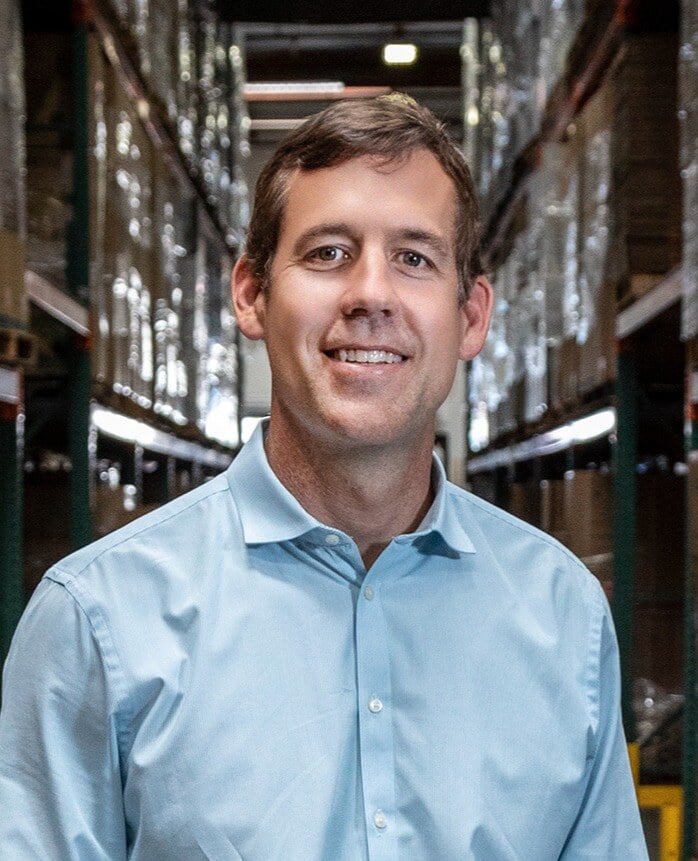How One Mid-Sized Brand is Navigating Rising Costs and Finding New Growth
The landscape for consumer product brands is shifting fast—especially for companies importing from China and selling through big-box retailers, Amazon, and DTC channels. With tariffs climbing as high as 45%, many companies are watching their margins disappear, while retailers push back on price increases.
Today, we’re going to break down how a realistic $30M consumer product company—one with 40–50% gross margins, its own warehouse, and multichannel sales—can survive and thrive.
This company: Sources most of its products from China
- Sells through Amazon, Home Depot, Walmart, Target, and Lowes
- Runs its own warehouse and fulfillment operations
- Has thin contribution margins (~22%) after retailer fees
- Faces increasing financial pressure from tariffs and debt
The Problem: The Old Model No Longer Works
For years, this company imported products, marked them up, and sold through major retailers. But now, with rising costs and limited pricing flexibility, profitability is getting squeezed. They need a new strategy to offset tariffs, margin compression, and retailer control.
To future-proof the business, this company is exploring two major pivots:
- Turning their warehouse into a 3PL business to generate steady, high-margin revenue.
- Building an Amazon, DTC, and Retail Growth Agency to help brands scale in major channels.
Let’s break down how each pivot works and the potential financial upside.
Pivot #1: Transforming Into a 3PL (Third-Party Logistics) Provider
If a company already warehouses and ships its own products, why not monetize that expertise and infrastructure by becoming a 3PL provider?
Why This Works
- Warehousing and fulfillment expertise: If you’re already fulfilling orders efficiently, other brands will pay for your service.
- Retail compliance knowledge: You know how to navigate shipping rules for Home Depot, Amazon, Walmart, and Target—a major advantage over generic 3PLs.
- Higher-margin revenue stream: While product sales might net 10–15% margins, a well-run 3PL can generate 30%+ EBITDA margins.
How It Works
|
3PL Revenue Stream |
Description |
|
Storage (stacked pallets) |
Brands pay a monthly fee for inventory storage. |
|
Order fulfillment |
Picking, packing, and shipping customer orders. |
|
Freight brokerage |
Negotiating and managing freight shipments. |
|
Returns & kitting |
Handling product returns and bundling services. |
Revenue Potential for a 100,000 Sq. Ft. Warehouse
|
Service |
Annual Revenue Potential |
|
Storage (stacked pallets) |
$5M–$7M |
|
Order fulfillment |
$1M–$2M |
|
Freight brokerage |
$600K–$1.2M |
|
Returns & kitting services |
$1M–$2M |
|
Total 3PL Revenue |
$7M–$10M+ |
At full capacity, this business could generate $7M+ per year, with $2M+ in profit at a 30% margin.
Who Would Be the Clients?
- DTC brands & small manufacturers that don’t have warehouse space.
- Amazon sellers & e-commerce brands needing FBA prep and fulfillment.
- Brands needing big-box compliance (shipping into Home Depot, Walmart, Target).
- Importers needing bulk storage before shipping to U.S. retailers.
Steps to Get Started
- Create a separate 3PL division to keep branding distinct.
- Test with 2–3 pilot clients before scaling.
- Invest in 3PL management software (e.g., ShipBob, 3PL Central).
- Leverage existing retailer relationships to attract high-value clients.
Pivot #2: Building an Amazon, DTC, and Retail Growth Agency
Many brands struggle with selling on Amazon, growing DTC sales, and expanding into big-box retail. If you already manage these channels for your own products, why not help other brands do the same—for a fee?
Why This Works
- Amazon & Shopify expertise is in high demand. Brands need help with ads, fulfillment, and listing optimization.
- Big-box retail expansion is difficult. Companies struggle to get into Home Depot, Walmart, Target, and Lowes—but if you know how, they’ll pay for guidance.
- Higher margins than physical products. Agencies operate at 20–30% EBITDA margins, better than many consumer product sales models.
How It Works
|
Agency Service |
Description |
|
Amazon Management |
Optimizing listings, running ads, handling logistics. |
|
DTC Growth Strategy |
Driving Shopify sales via SEO, paid ads, and social media. |
|
Retail Expansion Consulting |
Helping brands break into big-box retail (Home Depot, Walmart, Target, Lowes). |
Revenue Potential
|
Agency Model |
Annual Revenue Potential |
|
10 clients at $5K/month |
$600K |
|
10 clients at $10K/month |
$1.2M |
|
10 clients at $25K/month |
$3M |
|
Agency Model Scaling to 20 Clients |
$3M–$5M+ |
A 10-client agency could generate $3M–$5M per year with 20–30% EBITDA margins.
Who Would Be the Clients?
- Brands struggling on Amazon—Sellers who need better ads, SEO, and inventory management.
- DTC brands that want more sales—Shopify-based companies looking to scale.
- International companies entering the U.S.—Foreign brands needing Amazon & retailer expertise.
- Small manufacturers trying to get into Home Depot & Walmart.
Steps to Get Started
- Start with existing contacts—Offer Amazon or Shopify management services.
- Use automation tools—AI-powered PPC and SEO tools help improve efficiency.
- Expand into big-box retail consulting—Help brands pitch to Home Depot, Walmart, Target, and Lowes.
Which Pivot is Right for This $30M Company?
|
Factor |
3PL Business |
Amazon/DTC Agency |
|
Best For… |
Companies with warehouse & logistics expertise. |
Companies with strong Amazon/DTC experience. |
|
Key Assets Needed |
Warehouse space, fulfillment expertise. |
E-commerce marketing expertise. |
|
Margins |
30%+ EBITDA |
20–30% EBITDA |
|
Scalability |
Requires physical space. |
Easily scalable (team-based). |
|
Revenue Model |
Monthly storage + per-order fees. |
Monthly retainers + % of ad spend. |
- 3PL offers steady, predictable income with long-term contracts.
- An Amazon/DTC agency scales faster but requires marketing expertise.
Final Takeaway: Reinvent or Risk Irrelevance
The old playbook—importing from China, selling through big-box retailers, and hoping for stable margins—is falling apart.
The companies that survive and thrive will be the ones that: ✔ Pivot into high-margin revenue streams like 3PL or agency services.
✔ Leverage existing assets to create new, recurring income.
✔ Think beyond just selling products—owning logistics or digital strategy creates competitive moats.
This $30M company is now testing both pivots, setting itself up for a stronger, more diversified future.
What’s your move? Would 3PL or an agency model work for your company? Drop a comment below!

